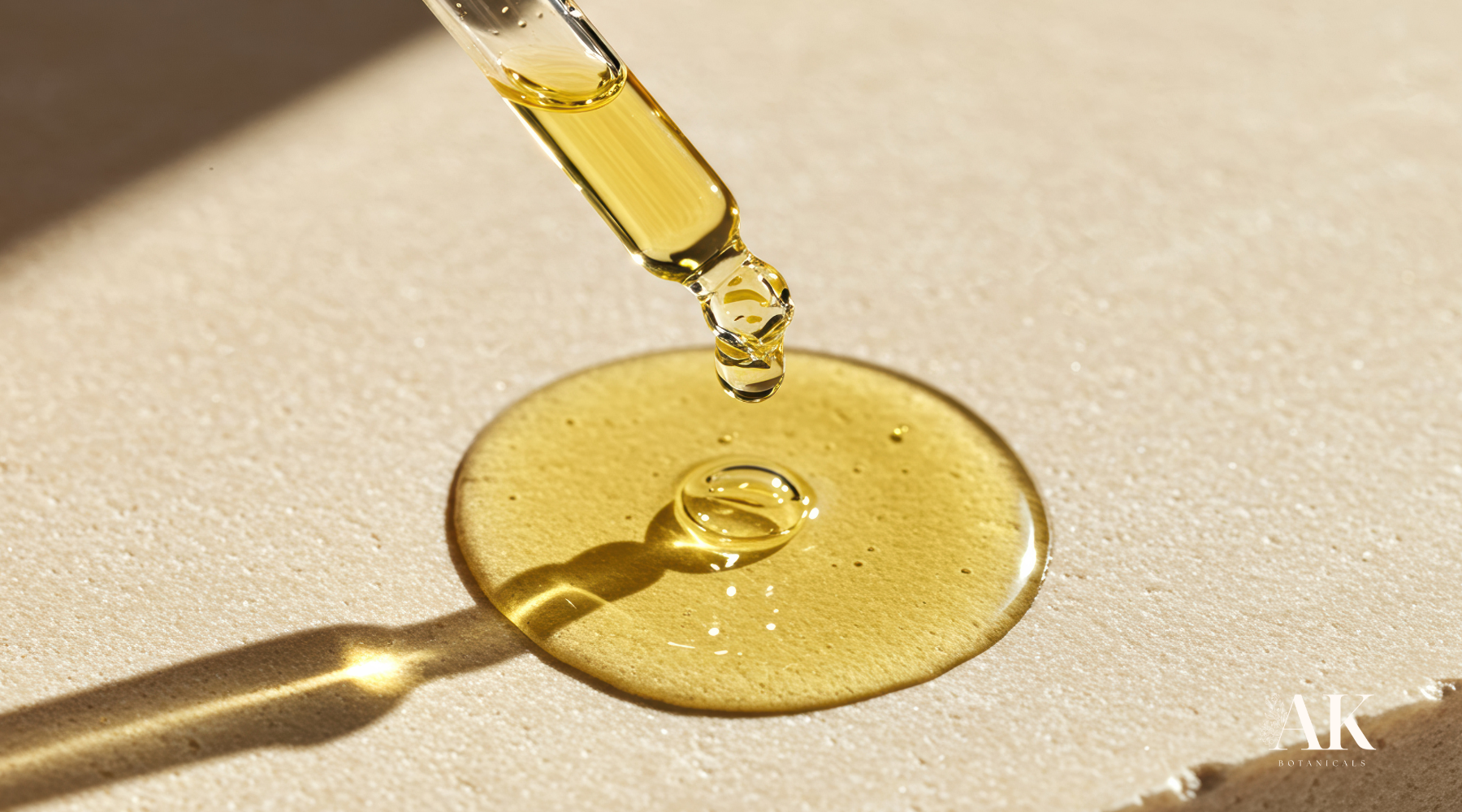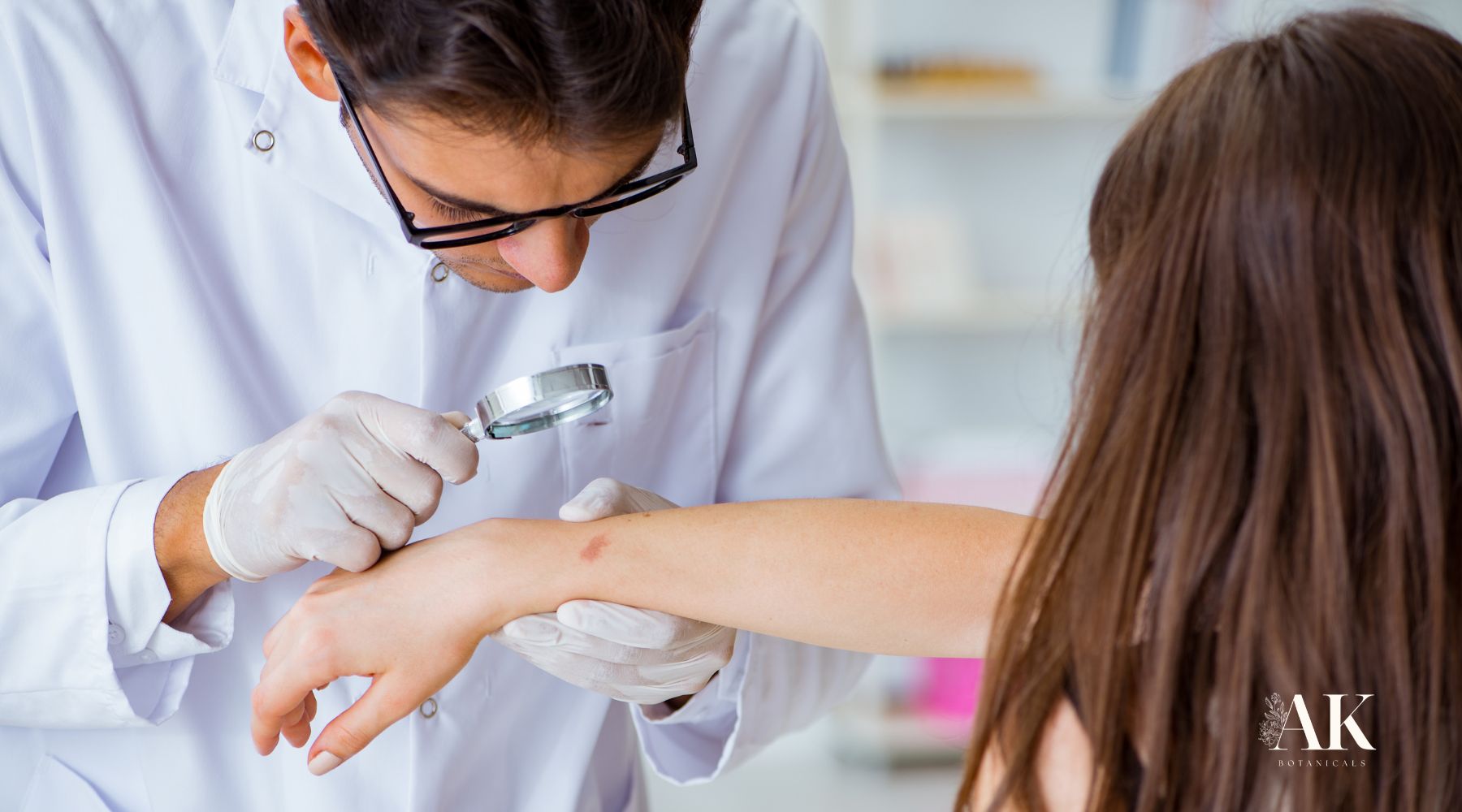Article: What You Should Know About Using Castor Oil and Baking Soda for Actinic Keratosis

What You Should Know About Using Castor Oil and Baking Soda for Actinic Keratosis
The search for something natural
It usually begins with curiosity. A friend swears by a kitchen remedy; an online forum posts dramatic before-and-after photos. Before long, “castor oil and baking soda for actinic keratosis” shows up in thousands of search bars.
For many people dealing with chronic sun damage, the idea is tempting: inexpensive, easy ingredients that might smooth rough patches or lighten discoloration. Yet, as common as these home recipes are, few stop to ask why they might appear to help—or whether they can actually harm delicate, UV-sensitized skin.
The truth is nuanced. Castor oil and baking soda each have distinctive properties that make them useful in specific contexts—but applying them directly to actinic keratoses can carry risks that outweigh the potential benefits. To understand why, we need to look at what each substance does on the skin, what studies show, and how dermatologists interpret those findings.
How the castor-oil-and-baking-soda method emerged
The pairing traces back decades to folk skincare practices. Castor oil, pressed from Ricinus communis seeds, has been used for its dense, emollient texture. Baking soda—sodium bicarbonate—was prized as a mild abrasive and odor neutralizer.
Online anecdotal recipes claim that mixing them forms a paste that “draws out damaged cells.” Proponents often describe applying the mixture nightly and covering it with a bandage until the rough spot “flakes off.”
What’s rarely discussed is that these reports are not based on clinical research, and the apparent flaking can simply be chemical irritation—not healing. Dermatologists warn that many such stories confuse surface exfoliation with resolution of underlying sun-induced mutations.
Castor oil: composition and potential effects
The chemistry
Castor oil is unusually rich in ricinoleic acid, a fatty acid with humectant and mild anti-inflammatory properties. Laboratory studies show that ricinoleic acid can influence prostaglandin E2 pathways, contributing to its long-known soothing effect when used in small concentrations for dryness or inflammation.
In skincare
Because of its thickness, castor oil forms an occlusive film that helps retain moisture. It is sometimes included in lip balms or lash serums. However, it can also trap heat and bacteria, which may aggravate irritated or precancerous skin when applied too thickly.
Research relevance to actinic keratosis
No peer-reviewed studies demonstrate that castor oil removes or reverses actinic keratoses. Its potential benefit lies only in hydrating adjacent skin and possibly reducing superficial flaking when used cautiously. It should never replace dermatologist-recommended treatments.
Baking soda: myth versus mechanism
The chemistry
Sodium bicarbonate has an alkaline pH around 9. Skin, on the other hand, thrives near pH 5.5. Applying a strongly alkaline substance can disturb the acid mantle—the protective layer that maintains moisture and wards off microbes.
The exfoliation illusion
When baking soda contacts sebum, it briefly dissolves surface lipids and dead cells. The immediate smoothness many people feel is simply the removal of this layer, not the neutralization of abnormal cells beneath. Over time, such disruption can weaken the barrier and lead to redness, burning, or secondary infection—particularly risky on already compromised, sun-exposed areas.
Lack of clinical support
No dermatological or pharmacological studies endorse baking soda as safe or effective for precancerous lesions. Most experts discourage its routine facial or lesion use.
Why the mixture irritates—and sometimes worries dermatologists
Combining a heavy occlusive (castor oil) with a high-pH abrasive (baking soda) can trap caustic residue against sensitive tissue. Users sometimes misread the resulting redness or crusting as proof the remedy is “working.” In reality, that reaction signals chemical irritation and possible epidermal damage.
Dermatologists emphasize that actinic keratoses contain atypical cells in the epidermis; aggressive at-home caustic methods may delay proper diagnosis or mask malignant transformation. What looks like scabbing “removal” could conceal progression toward squamous-cell carcinoma.
The dermatologist’s view
Professional skin specialists rarely recommend untested topical concoctions for precancerous conditions. Instead, they rely on:
-
Clinical evaluation—to confirm whether a lesion is indeed an AK or an early carcinoma.
-
Evidence-based therapies—cryotherapy, topical fluorouracil, imiquimod, or photodynamic therapy, all with monitored safety profiles.
-
Adjunctive skincare—non-irritating, antioxidant-rich formulations that comfort and protect treated areas.
From their perspective, the main danger of the castor-oil-and-baking-soda trend is false reassurance—believing a lesion is cured when it has merely become inflamed or scabbed over.
The appeal of natural care—and how to approach it safely
The popularity of such DIY methods reflects a deeper desire: to care for the skin naturally, without harsh chemicals. That instinct is valid and worth honoring. Nature offers remarkable compounds that genuinely aid the skin’s defenses—but the difference lies in scientific evaluation and formulation control.
Botanical research has identified plant-derived molecules with antioxidant or cytoprotective potential. For instance:
Soursop (Annona muricata)
Studies on its leaf and seed extracts highlight acetogenins with cytotoxic and antioxidant effects in laboratory settings. These findings are preliminary and not tested for treating actinic keratosis, yet they illustrate nature’s biochemical diversity.
Bloodroot (Sanguinaria canadensis)
Contains sanguinarine, an alkaloid studied for anti-inflammatory and cytotoxic properties. While intriguing, unregulated or concentrated use can cause severe irritation; safe utilization requires careful formulation and dermatologist oversight.
Products like AKti-Clear™ integrate such botanically derived ingredients into balanced, dermatologically developed bases to support overall skin health. AKti-Clear™ is not a medication, nor substitutes for clinical care—it simply bring the beneficial aspects of plant research into a safe, controlled context.
What to do instead: dermatologist-approved natural synergy
If you’re drawn to holistic approaches, consider these safer, complementary practices backed by dermatological science:
1. Reinforce your skin barrier
Use a gentle cleanser, pH-balanced moisturizer, and daily SPF 30+ sunscreen. Well-hydrated, protected skin is less prone to irritation and better equipped for professional treatments.
2. Integrate antioxidants
Serums containing vitamin C, niacinamide, green-tea extract, or resveratrol can help neutralize free radicals generated by UV exposure.
3. Explore botanically infused skincare
Dermatologist-tested products with plant oils such as jojoba, rosehip, or soursop can soothe dryness without the alkalinity risk of baking soda.
4. Schedule regular check-ups
Even holistic routines should coexist with professional exams every 6–12 months to monitor for new or changing lesions.
Understanding why people see short-term “results”
We see many people posting online photographs after using castor-oil-baking-soda pastes show inflamed, crusted skin followed by apparent clearing. Dermatologists interpret these changes as superficial exfoliation plus temporary depigmentation caused by irritation.
Once the inflammation subsides, the lesion may reappear—sometimes thicker. The perceived success is transient, while the underlying actinic damage remains.
Recognizing this pattern helps shift focus from “removing a spot” to supporting the whole skin field—the surrounding area affected by years of UV exposure.
The concept of “field therapy”
Even when one AK spot seems gone, neighboring skin often contains microscopic changes. Treating the broader area—using dermatologist-guided topical therapies or gentle botanical support—addresses the entire “field.”
Attempting to burn, scrape, or chemically erode individual lesions at home can miss this larger process. Consistent professional monitoring plus daily protective care achieves safer, longer-lasting balance.
The holistic picture: lifestyle and environment
Long-term skin health depends as much on daily choices as on topical products.
Nutrition
Diets high in omega-3 fatty acids, carotenoids, and polyphenols—found in fish, colorful vegetables, and olive oil—have been linked to improved photo-protection.
Hydration
Water supports the skin’s natural detoxification processes and barrier recovery. Aim for steady intake rather than sudden excess.
Stress and sleep
Chronic stress elevates cortisol, which can impair immune surveillance and slow healing. Prioritizing rest, mindfulness, and gentle movement indirectly supports your skin’s ability to recover from UV stress.
Comparing kitchen remedies with formulated botanical care
|
Aspect |
DIY Castor Oil + Baking Soda |
Dermatologically Formulated Botanical Care |
|
pH |
~9 (alkaline, disruptive) |
~5.0–5.5 (skin-friendly) |
|
Research |
Anecdotal only |
Laboratory and safety-tested ingredients |
|
Risk of irritation |
High |
Low to moderate (formulated for tolerance) |
|
Monitoring |
Self-applied, unverified |
Often dermatologist-approved |
|
Goal |
Remove visible lesion |
Support barrier, comfort, and health |
How to talk to your dermatologist about natural options
Open communication makes integrative care possible. You might say:
“I’ve read about castor oil and baking soda being used for sun-damaged spots, but I’m concerned about safety. Are there botanical products or ingredients you recommend instead?”
This approach keeps you involved in your care while ensuring professional oversight. Many dermatologists now collaborate with holistic practitioners to design routines that respect both evidence and personal philosophy.
Rebuilding trust in your skin
When dealing with chronic sun damage, it’s easy to lose confidence—especially after trying home remedies that cause discomfort or scarring. Rebuilding trust means treating your skin as an ally rather than a project.
Daily protection, hydration, and mindful observation gradually restore stability. Over months, texture evens out, and redness diminishes—not because of aggressive abrasion, but because the skin’s natural repair systems are finally supported rather than disrupted.
-
Castor oil can moisturize but cannot remove actinic keratosis.
-
Baking soda is too alkaline for compromised skin and may increase irritation risk.No clinical trials support the mixture for AK; anecdotal “successes” often reflect superficial damage, not cure.
-
Botanically infused, dermatologist-tested products—such as those containing soursop or bloodroot extracts in safe concentrations—offer a more balanced approach to supporting sun-exposed skin.
-
Regular professional evaluations remain the gold standard for monitoring precancerous changes.
The popularity of the castor-oil-and-baking-soda remedy shows how deeply people yearn for natural, accessible answers. The best path forward is not rejecting that instinct—but guiding it with science.
Choosing balanced botanical care honors both nature and evidence. When you replace harsh experimentation with informed consistency, you give your skin the environment it needs to thrive.
Every day spent protecting, hydrating, and observing your skin is an act of prevention. Over time, those quiet routines achieve what quick fixes rarely can: calm, resilient, healthy-looking skin that reflects care rather than reaction.
AKti-Clear™ is a dermatological skincare product formulated to support overall skin health. It is not intended to diagnose, treat, cure, or prevent any disease.
Information in this article is for educational purposes only and should not replace professional medical advice. Always consult a qualified healthcare provider or dermatologist regarding concerns about actinic keratosis or any other skin condition.
Sources & Further Reading
American Academy of Dermatology Association – Actinic Keratosis Treatment Options
Draelos ZD et al., Journal of Cosmetic Dermatology, 2023 – Skin barrier pH and home remedies
ScienceDirect – Phytochemical Analysis and Anticancer Activity of Annona muricata Extracts
Cancer Therapy Advisor – Bloodroot and Cancer Fact Sheet
Skin Cancer Foundation – Field Therapy and Preventive Dermatology



